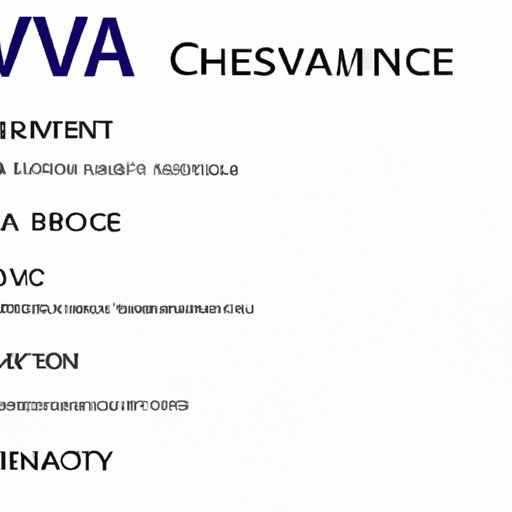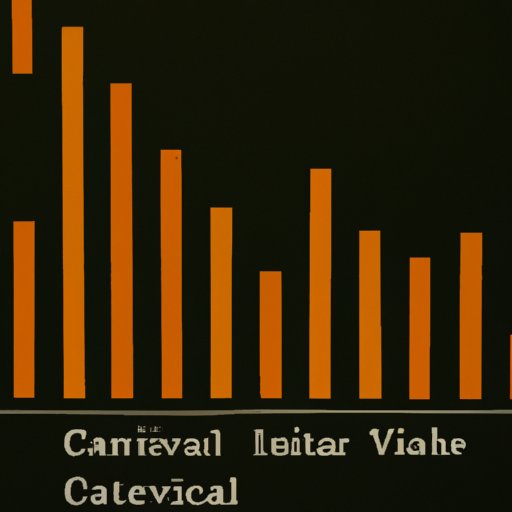Introduction
Credit Valuation Adjustment (CVA) is a term used in finance to describe the process of adjusting the value of a security or other financial instrument for the potential that its counterparty may default. It is a measure of the risk associated with a transaction and is often used by banks and other financial institutions when determining the value of their investments. This article will provide a comprehensive overview of CVA in finance, exploring its definition, impact on financial markets, role in risk management, and its use in investment banking.
A Comprehensive Guide to CVA in Finance
The concept of CVA has become increasingly important in recent years, as financial markets have become more complex and interconnected. In order to properly assess the risks associated with a particular transaction, it is necessary to account for the possibility that the counterparty may fail to fulfill its obligations. CVA provides a quantitative measure of this risk, allowing investors to make more informed decisions about their investments.
Exploring the Basics of Credit Valuation Adjustment
At its core, CVA is a measure of the expected losses associated with a transaction due to the counterparty’s default. It is calculated by taking into account several factors, such as the creditworthiness of the counterparty, the terms of the contract, and the current market conditions. CVA is typically expressed as a percentage of the total value of the transaction and is used to adjust the overall value of the trade.
How Does CVA Impact Financial Markets?
CVA can have a significant impact on the financial markets, as it is used to determine the value of a security or other financial instrument. By taking into account the potential for default, CVA allows investors to accurately assess the risks associated with a particular transaction. This can help them make more informed decisions about their investments and can also help protect against potential losses.
The Role of CVA in Risk Management
CVA plays an important role in risk management, as it helps identify areas of potential risk within a portfolio. By taking into account the potential for default, CVA can help investors better understand the level of risk associated with a particular investment. This can help them make more informed decisions about how to allocate their capital and can help reduce the overall risk of their portfolios.

An Overview of CVA in Investment Banking
CVA is also used extensively in investment banking. It is used to calculate the value of derivatives and other complex financial instruments, as well as to assess the risk associated with a particular transaction. According to a study by the International Swaps and Derivatives Association (ISDA), “CVA is a key component of the pricing of derivatives products and is used to incorporate counterparty credit risk into the cost of transactions.”
Understanding the Impact of CVA on Derivatives
Derivatives are complex financial instruments that derive their value from underlying assets. CVA is used to calculate the value of these instruments, as it takes into account the potential for default. This helps investors make more informed decisions about their investments and can help reduce the overall risk of their portfolios.
Examining Different Types of CVA Calculations
There are several types of CVA calculations that can be used to assess the risk associated with a particular transaction. These include credit exposure, potential future exposure, and expected shortfall. Each type of calculation is designed to provide a different level of insight into the risk associated with a particular transaction and can be used to make more informed decisions about investments.
Conclusion
In conclusion, CVA is a critical tool used in finance to assess the risk associated with a particular transaction. It is used to take into account the potential for default, helping investors make more informed decisions about their investments. CVA is also used extensively in investment banking to calculate the value of derivatives and other complex financial instruments. Understanding the basics of CVA is essential for any investor or financial professional looking to make more informed decisions about their investments.
Summary of Key Points
This article provided a comprehensive overview of CVA in finance. It explored the definition of CVA and how it is used to assess the risk associated with a particular transaction. It also discussed the impact of CVA on financial markets and its role in risk management. Finally, it examined the use of CVA in investment banking, including different types of CVA calculations.
Recommendations for Further Research
Further research should be conducted to explore the implications of CVA on financial markets, as well as to develop more sophisticated models for calculating CVA. Additionally, research should be conducted to examine the impact of CVA on derivative pricing and to identify methods for mitigating the risks associated with CVA.
(Note: Is this article not meeting your expectations? Do you have knowledge or insights to share? Unlock new opportunities and expand your reach by joining our authors team. Click Registration to join us and share your expertise with our readers.)
